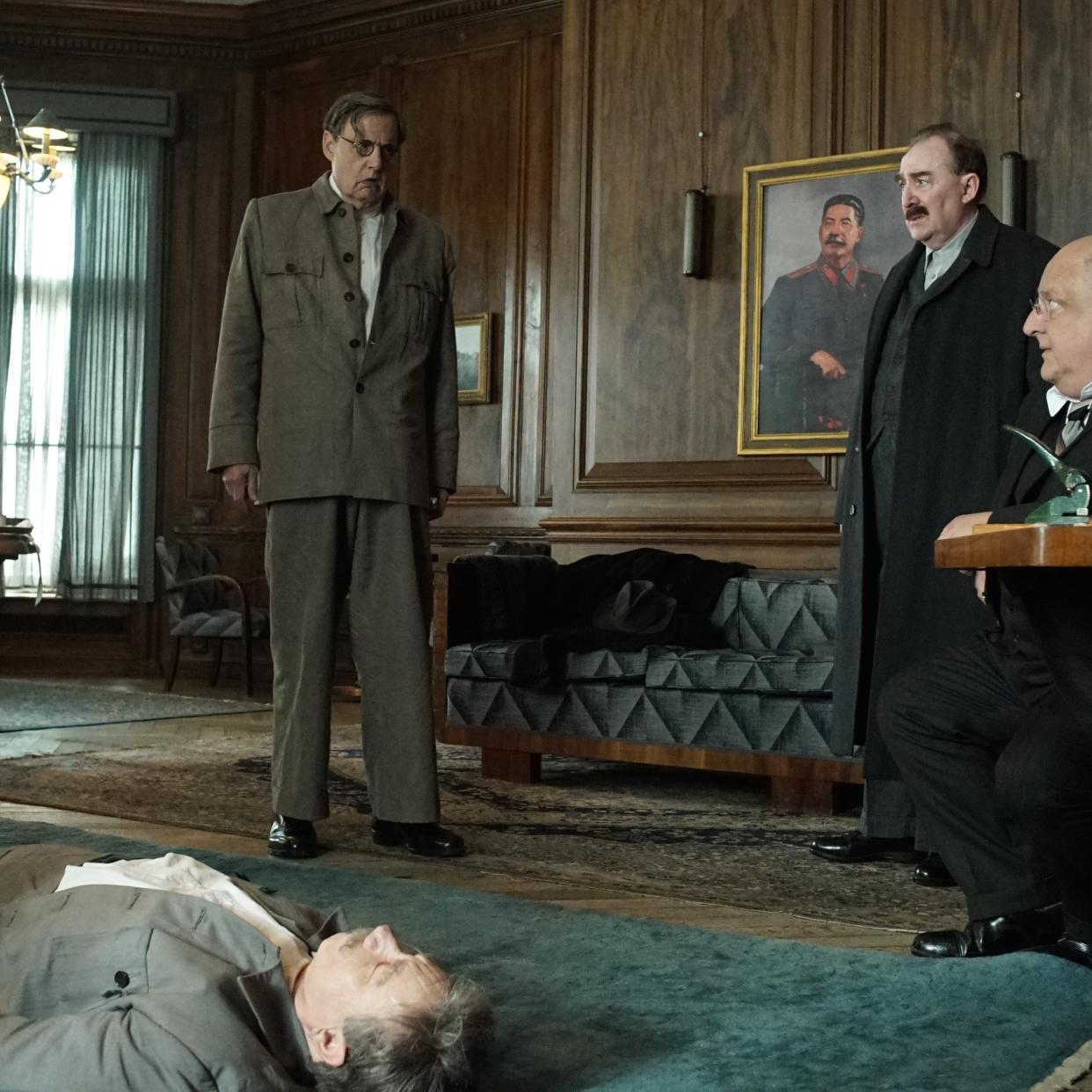In The Death of Stalin , a Dictator’s Fall Is Seriously Funny

Given the current political climate, one might consider a better use of their time than reliving the terror of an expired oppressive regime when the daily actions of certain all-too-present political figures are already depressing enough. Well, for one thing, when Armando Iannucci does it, it just sounds better. The director of the newly released film The Death of Stalin has been called the greatest satirist of our age, thanks to prior efforts like his Academy Award–nominated debut feature, In the Loop, and the American adaptation of his BBC series The Thick of It which became a little something called Veep. That critically adored, Emmy-sweeping HBO comedy juggernaut follows the trials and tribulations of the former first female VP and president, the egomaniacal Selina Meyer (played to perfection by Julia Louis-Dreyfus). You might say Iannucci has a type: “After Veep, I wanted to do something entirely different,” the director said on Thursday night, at the New York premiere of The Death of Stalin. “So here’s a story about a self-obsessed tyrannical narcissist who terrorizes his people—” A brief pause. “But in this case, he dies.”
The sharply written, fast-talking satire begins in 1953 in Moscow, where Stalin (Adrian McLoughlin) has ruled the Soviet Union for several decades, and via his infamous purges, has created an atmosphere of terror and uncertainty. While the head of Radio Moscow scrambles to send a requested orchestra performance to Stalin (just one problem . . . the performance wasn’t recorded), the opening scenes introduce us to the key members of the high committee—powerful men who also happen to be mindless sycophants, all vying for favor from the paranoid dictator and terrified that any wrong word in his presence could have them put on “the list.”
But for a man who murdered millions to protect his own power, in Iannucci’s version, the dictator’s downfall is relatively swift. It’s the aftermath that takes the lion’s share of the attention, chronicling the machinations of desperate men and an absurdist power struggle between Khrushchev (Steve Buscemi) and Beria (Simon Russell Beale) as they race for Stalin’s seat—including one particularly memorable scene of both men running through the forest to be the first to console (and court) Stalin’s daughter, Svetlana, played by Andrea Riseborough. It’s these moments of outlandish slapstick peppered throughout the routine instances of extreme violence that bring to mind the movie Inglourious Basterds, but while Quentin Tarantino’s film created an ultra-gory revisionist history about Hitler’s demise, Iannucci instead chooses to rely on many seemingly impossible but actually real events surrounding the end of history’s second-most reviled dictator. “If any moment in this film seems believable, then we probably made it up,” the director said before the film’s New York premiere. “But if you’re thinking to yourself, There’s no possible way this could have happened, then I can assure you, it really did.”
After Stalin’s New York premiere, Buscemi considered the power of comedy to change hearts and minds—or at least remain relevant; an effort he illustrated by comparing the films Dr. Strangelove and Fail Safe. “Both came out in 1964, but Fail Safe took a decidedly more serious approach to the issue of the nuclear arms race,” said Buscemi. “And of course, most people today remember Kubrick’s Dr. Strangelove.”

